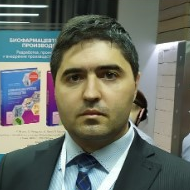Cyclic and Heterocyclic Compounds in Drug Synthesis and Delivery
A special issue of International Journal of Molecular Sciences (ISSN 1422-0067). This special issue belongs to the section "Molecular Pharmacology".
Deadline for manuscript submissions: closed (31 December 2023) | Viewed by 2635
Special Issue Editor
Special Issue Information
Dear Colleagues,
Currently, medicinal chemistry has become one of the main areas of chemistry. The search for biological activity is carried out even with compounds that were previously difficult to imagine as medicinal. Heterocyclic compounds are a huge component of medicinal chemistry and exhibit the widest range of biological activity. More and more attention is being given by researchers to these natural compounds or their analogues. Cyclic, polycyclic and cage compounds such as camphor, fenchon and adamantane have become common structural elements of potential drugs.
In recent years, in vitro testing has become incredibly accessible, and the availability of in vivo testing has increased dramatically. Thousands of compounds have been tested and thousands are being tested right now. In this regard, the attention of researchers began to switch to improving the pharmacokinetic properties of their molecules. The number of publications devoted to drug delivery is growing rapidly. Additionally, it is most likely that in the coming years, the focus of researchers will slightly shift from the synthesis of new molecules to the improvement of already known ones and the development of methods for their delivery. This Special Issue will feature papers on the synthesis of new biologically active compounds based on cyclic, heterocyclic and cage building blocks, studies on the modification of such compounds in order to increase their water solubility and other pharmacokinetic properties, and the development of delivery methods for such compounds.
Suggested topics include, but are not limited to:
- Methods for the synthesis of cyclic, heterocyclic and cage organic molecules;
- Studies of biological activity;
- Modification of molecules to increase druglikeness;
- Development of drug delivery methods;
- Study of metabolism and pharmacokinetics.
Dr. Vladimir V. Burmistrov
Guest Editor
Manuscript Submission Information
Manuscripts should be submitted online at www.mdpi.com by registering and logging in to this website. Once you are registered, click here to go to the submission form. Manuscripts can be submitted until the deadline. All submissions that pass pre-check are peer-reviewed. Accepted papers will be published continuously in the journal (as soon as accepted) and will be listed together on the special issue website. Research articles, review articles as well as short communications are invited. For planned papers, a title and short abstract (about 100 words) can be sent to the Editorial Office for announcement on this website.
Submitted manuscripts should not have been published previously, nor be under consideration for publication elsewhere (except conference proceedings papers). All manuscripts are thoroughly refereed through a single-blind peer-review process. A guide for authors and other relevant information for submission of manuscripts is available on the Instructions for Authors page. International Journal of Molecular Sciences is an international peer-reviewed open access semimonthly journal published by MDPI.
Please visit the Instructions for Authors page before submitting a manuscript. There is an Article Processing Charge (APC) for publication in this open access journal. For details about the APC please see here. Submitted papers should be well formatted and use good English. Authors may use MDPI's English editing service prior to publication or during author revisions.
Keywords
- heterocycles
- cyclic compounds
- cage compounds
- terpenes
- drug discovery
- drug delivery
- biological activity
- drug metabolism






